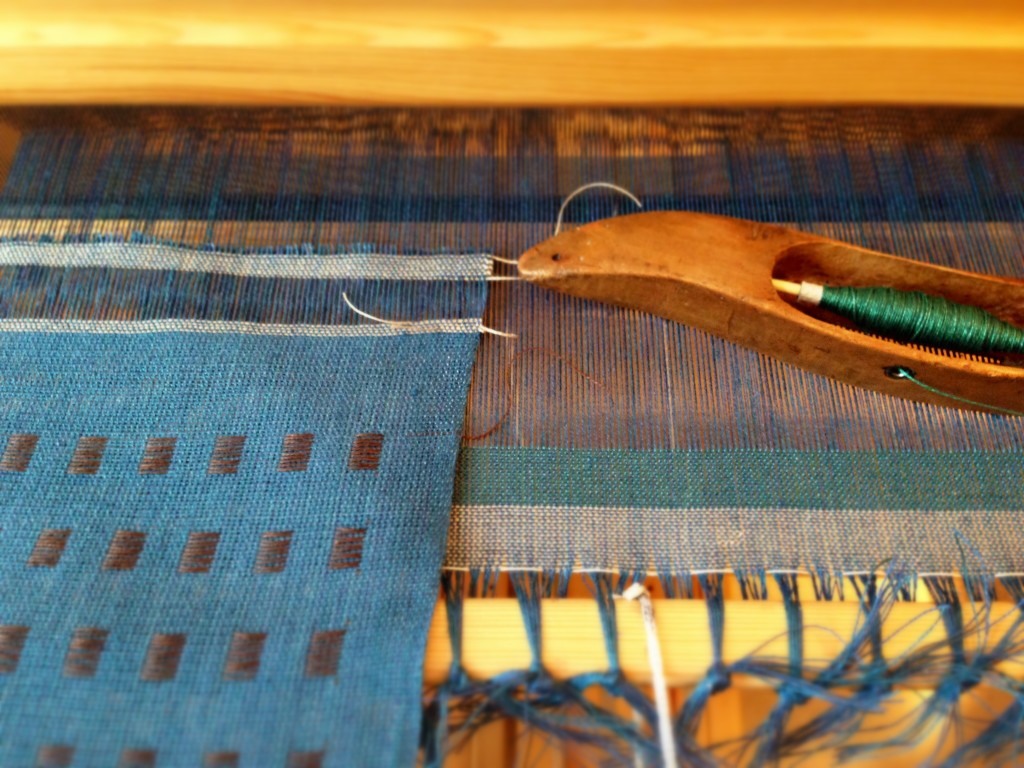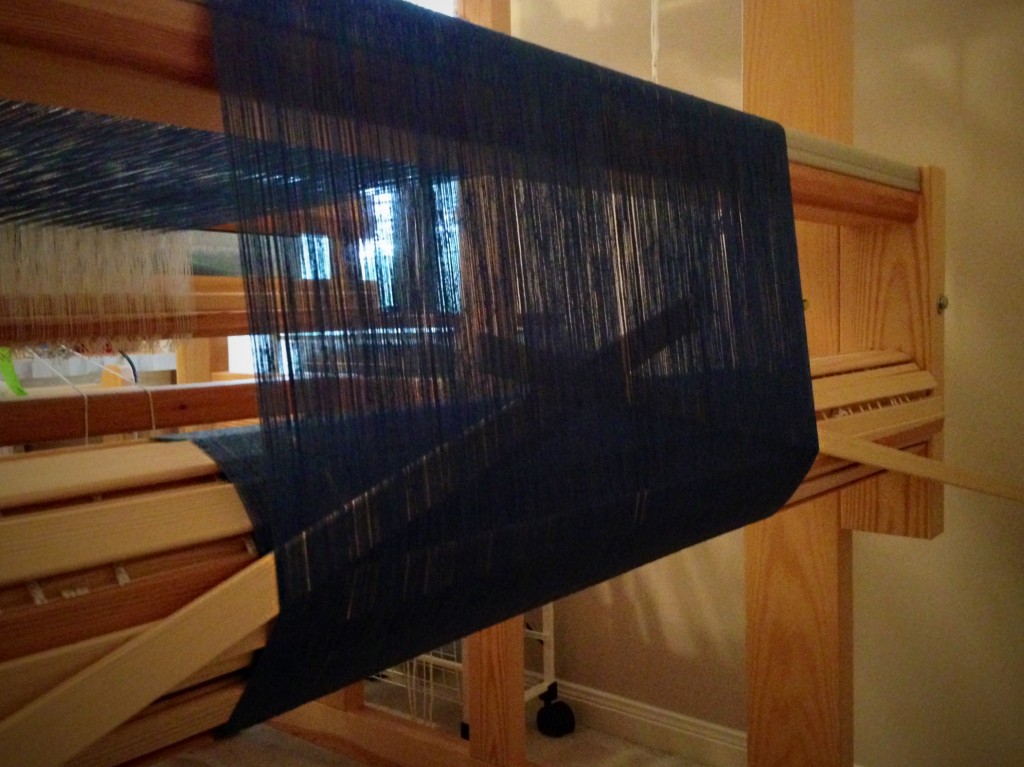Those pesky warp ends! I am getting loose warp ends on the outer edges again. The last time this happened, it was near the end of the warp, and I rigged up a makeshift solution. (You can read about it and see pictures HERE.) This time, I began having trouble from the start; so, when I finished weaving the first piece, I cut it off, and re-tied the warp. There must be a better way!

How do you handle recurring problems? I get tired of stumbling over the same old thing. I wanted to find a solution to this warp issue, so I started digging through my weaving books to see what I could find. Aha! On page 254 in The Big Book of Weaving, by Laila Lundell, I find helpful advice.
The outer ends of the warp are looser than the rest
(You mean I’m not the first person to have this problem?)
This can be adjusted by pressing an extra slat down at an angle inside the loose sections.

Seekers find secrets. The seeking itself shows you recognize your own need. This is what prayer is about. Come to God asking, seeking, knocking. These are the prayers he answers. Simple, heartfelt, persistent. Never give up. There are secrets to be found.
May you uncover long lost secrets.
Truly Yours,
Karen

Am I surprised you found your weaving answer in the Big Book of Weaving????
And you are right, prayer answers so many other problems.
Getting excited about your trip?
Cyndi, you know me well. The Big Book of Weaving is my favorite resource.
Yes, I’m very excited about returning to Vavstuga in a couple weeks! That means more secrets to put in my bag of tricks.
Happy weaving (and spinning),
Karen
What an encouragement and reminder that God is pleased when we come to Him with our ‘tensions’ of life. He is the great healer and provider. So thankful we can commune with Him through the Bible and prayer.
Very thankful, indeed!
Karen
The Big Book of Weaving ist my favorite too. I learned to weave with it !
There are many secrets in weaving. Heard a professor talking about it yesterday – here on the handweaving fair in Umeå.
Love zour blogg !
Greetings from Sweden
Marianne
Marianne, I am delighted to read your comment. It is very special to receive greetings from Sweden!
I am using The Big Book of Weaving as my own textbook to teach myself how to weave. I enjoy learning from it.
Happy Weaving from Texas,
Karen
I have some Bockens 16/2 linen and have been staring at the dice weave picture in The Big Book of Weaving, wondering if the floats on the back are too long in the pattern sections. I wanted to make a table runner, not a pillow in which they would be protected on the inside.
What were you using your beautiful blue dice weave piece for, and what do you think about the floats on the back?
I cannot keep my warp even tight across the whole rug!
Hi Ronald, I think most warp tension problems originate in winding the warp and in tying on. That’s where I try to be the most careful. If I notice uneven tension while weaving I try to find a temporary solution, as in this post.
Karen
I had woven a couple of meters of fabric on my floor loom but then left for a year! I left it because I was frustrated with uneven tension across 800 warp threads but now with cat sleeping on it too, the tension is massively uneven. I don’t want to just cut it off loom but would like to finish it.
Can I wind the weaving I have done and the rest of the warp into the front beam and then re tie it to back beam? Will this fix my tension issue?
Any advice will be greatly appreciated.
Hi Marg, You don’t mention how long the remaining warp is. If it is only 1 or 2 meters, you “might” be able to pull it forward and retie on the back beam. Honestly, I’ve never done that, and it seems like a way to lose the warp entirely. I think you could end up with even worse tension problems – but, I’ve never done that, so I don’t know.
What I have done, as mentioned in this blog post, is either cut off what’s woven and tie back on, or find where the loose places are in the warp and stick in a wood slat by the back beam to take up the slack.
Most tension problems will be resolved by cutting off and tying the warp back on to the front. I hope that helps! Even if you cut off the warp and don’t recover, it’s not a total loss because you have learned from it.
Here’s hoping for happy weaving going forward,
Karen